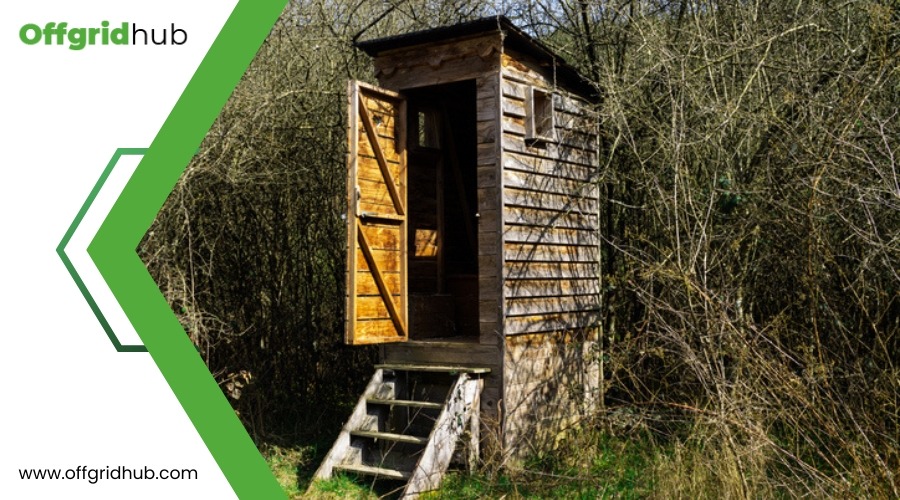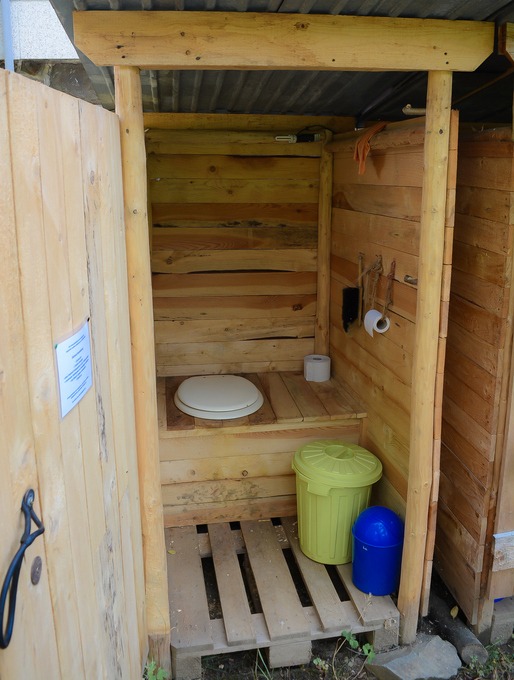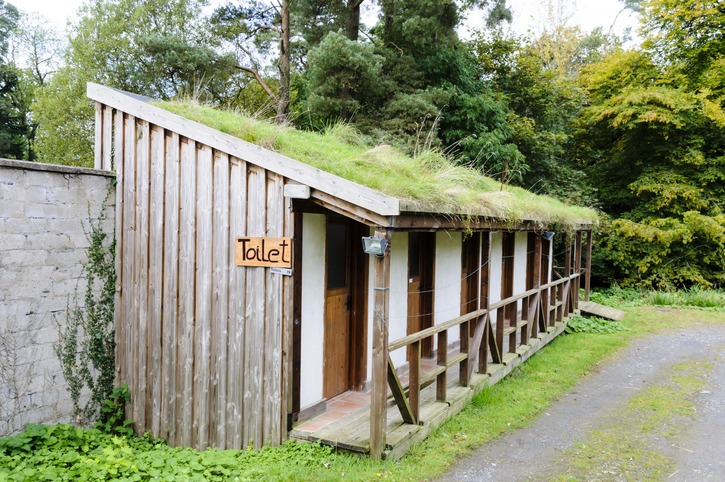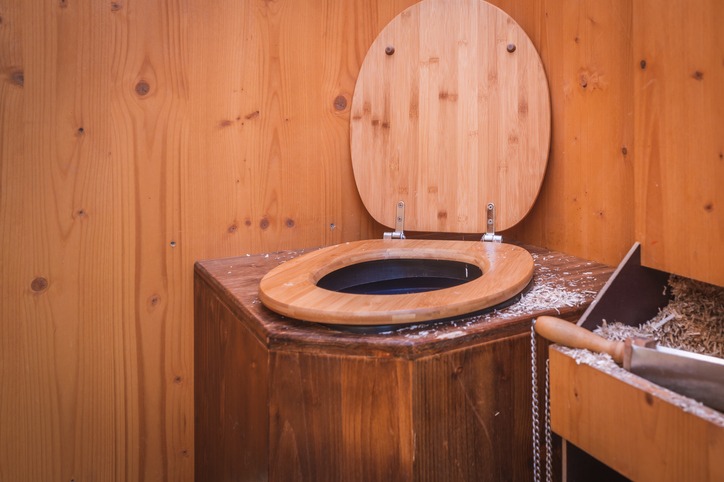Have you ever wondered how your waste could turn into a garden’s treasure? Composting toilets offer an innovative solution to eco-friendly waste management by transforming human waste into nutrient-rich compost. You’re not only conserving water but also reducing pollution and minimizing environmental impact with each use.
These systems don’t require water, electricity, or harmful chemicals, making them perfect for off-grid living. Yet, the question remains: how do they work, and can they truly replace traditional sewage systems? Let’s explore the mechanisms behind composting toilets and their potential to revolutionize waste management.
Understanding Composting Toilets
Composting toilets revolutionize the way we handle human waste, transforming it into nutrient-rich compost without needing water or electricity. These systems are a game-changer in eco-friendly waste management, drastically reducing the environmental footprint of traditional sanitation methods. By separating waste materials for natural decomposition, composting toilets turn what would otherwise be pollution into valuable organic matter. This process not only conserves precious water resources but also minimizes waste disposal costs, making it an efficient solution for areas lacking conventional sewage systems.
The addition of composting materials like sawdust or coconut coir is essential in these toilets, as it aids in odor reduction and accelerates the decomposition of waste. You’ll find that composting toilets require far less maintenance and cleaning than their traditional counterparts, thanks to their simple yet effective design. This makes them not just eco-friendly but also incredibly convenient.
Core Functionality Explained
Having explored the environmental benefits of composting toilets, let’s now examine how they effectively manage waste by breaking it down into compost. At the core, a composting toilet is a marvel in sustainable waste management, transforming what would otherwise be wastewater into a resource for enriching the environment.
Here are key points to understand about their functionality:
- Aerobic decomposition: By leveraging the natural process of aerobic decomposition, composting toilets break down human waste. This process doesn’t just eliminate the need for water-intensive sewage systems; it also avoids the use of harmful chemicals, making it an eco-friendly choice for waste management.
- Separation of waste: These innovative toilets separate solid waste, facilitating its conversion into compost. This step is crucial for minimizing environmental pollution and supporting sustainable practices.
- Production of nutrient-rich compost: The end product of a composting toilet is nutrient-rich compost. This can be used to support gardening practices, contributing to soil enrichment and further enhancing the sustainable loop.
Composting toilets represent a significant stride toward eco-friendly waste management. They conserve water – a precious resource – and operate without the reliance on electricity or fossil fuels, making them both cost-effective and environmentally responsible.
Environmental Advantages
By eliminating the need for flushing, composting toilets save you over 6,600 gallons of water per person every year. This significant water conservation is a cornerstone of their environmental advantage. Whether you opt for a self-contained composting toilet or a central system, you’re taking a step towards a more sustainable lifestyle. These systems don’t just save water; they transform human waste into compost through aerobic decomposition. This process not only conserves water but also reduces the environmental impact associated with traditional sewage treatment.
Composting materials in these toilets work to break down waste efficiently, creating nutrient-rich compost. This humus is beneficial for soil health, providing essential nutrients and helping to neutralize toxins. By diverting waste from treatment plants, composting toilets reduce the carbon footprint and energy usage of conventional sewage systems. This environmentally friendly approach to waste management supports a cycle of renewal, turning what would be waste into a resource. Adopting a composting toilet is a practical step towards reducing your environmental impact and living a more eco-conscious lifestyle.
Potential Drawbacks
While the environmental advantages of composting toilets are significant, it’s important to also consider their potential drawbacks. Despite their benefits, there are a few challenges you might face:
- Limited Acceptance and Accessibility: You may encounter hurdles such as building codes, health regulations, and zoning restrictions that can significantly impact the installation and use of composting toilets. These challenges stem from limited acceptance in certain areas, making it harder for you to choose this eco-friendly option.
- Learning Curve and Adjustment Period: Switching to composting toilets isn’t as straightforward as it seems. You’ll need to get used to different operation and maintenance procedures, which can be quite a shift from traditional toilets. This learning curve and adjustment period require patience and willingness to adapt.
- Maintenance and Management Effort: Unlike conventional toilets, composting toilets demand more from you in terms of maintenance and management. Monitoring temperature, moisture levels, oxygen, and the carbon-to-nitrogen ratio are essential for optimal performance, adding an extra layer of effort on your part.
Understanding these potential drawbacks is crucial as you consider making the switch to composting toilets. It’s not just about the benefits but also about being prepared for the challenges ahead.
Types of Composting Toilets
Several types of composting toilets are available, each designed to meet specific needs and space constraints, offering a sustainable solution for waste management. Unlike traditional flush toilets that rely heavily on water, modern composting toilets minimize water usage, promoting eco-friendly waste disposal.
Self-contained composting toilets, for instance, are perfect for small living spaces such as tiny homes, RVs, and boats. These units integrate the toilet and composting chamber in one, making them highly convenient for off-grid living. Central or remote composting toilets, on the other hand, position the composting chamber away from the toilet fixture, suitable for basements or outdoor setups. This separation allows for larger-scale sustainable waste management, accommodating more users.
Vermicomposting toilets introduce an innovative approach by employing worms to aid in the decomposition process within the composting chamber. This not only speeds up the breakdown of waste but also produces nutrient-rich castings, further enhancing the eco-friendly aspect of these systems.
Selection Criteria
When choosing a composting toilet, it’s crucial to consider the space you have available to ensure a proper fit. Selecting the right model can significantly contribute to eco-friendly waste management by minimizing your environmental impact. Here are three key factors to keep in mind during your selection process:
- Space Availability: Ensure the composting toilet you choose can be comfortably accommodated within your available space. This consideration is paramount to avoid any spatial inconveniences down the line.
- Budget and Modifications: Assess your budget not just for the initial purchase but also for potential installation costs and modifications. Some composting toilets may require adjustments to your existing plumbing systems, impacting the overall cost.
- Regulations and Compliance: Investigate local regulations and requirements to ensure your composting toilet is in compliance. It’s essential to understand the permissions needed for installation to avoid legal issues and to ensure your efforts towards eco-friendly waste management are recognized and supported.
Installation and Maintenance
Having selected the right composting toilet for your needs, it’s essential to focus on its proper installation and ongoing maintenance. The installation process requires you to find a suitable location, connect ventilation systems, and set up waste collection mechanisms for efficient operation. Ensuring your composting toilet is installed correctly from the start will pave the way for hassle-free use and environmental benefits.
Regular maintenance is key to keeping your system running smoothly. You’ll need to monitor temperature, moisture levels, oxygen supply, and carbon-to-nitrogen ratios in the composting chamber to ensure effective composting. Periodic emptying of the composting chamber and liquid containers is also essential for proper waste management. Using natural cleaning solutions, like a vinegar concentrate diluted with water in a 1:7 ratio, helps maintain hygiene without harming the composting process.
Adhering to manufacturer guidelines and recommended maintenance schedules is crucial. These guidelines are designed to maximize the lifespan and efficiency of your composting toilet system. By following these steps, you’ll ensure your composting toilet operates effectively, contributing to a more sustainable lifestyle.
Regulations and Permissions
Before installing your composting toilet, it’s crucial to understand the regulations and permissions required in your area. State requirements can greatly differ, with some areas being more lenient than others. For instance, Alabama, Alaska, and California have minimal restrictions, making them ideal for those looking to adopt alternative waste management solutions. Yet, it’s not just about the state laws; local authorities might’ve a say too.
To ensure you’re on the right side of the law, consider the following:
- Familiarize yourself with your state’s regulations regarding composting toilets to avoid any legal issues.
- Check with local authorities to understand any zoning restrictions or building codes that may affect your installation.
- Composting toilets are a boon in off-grid settings, often simplifying compliance with sanitation regulations.
Whether you’re in an area that considers composting toilets as a permissible and legally compliant alternative, or you’re navigating through stricter local legislations, getting to grips with these laws is essential. Remember, legal adherence isn’t just about avoiding fines—it’s about contributing positively to your community’s environmental health while respecting established guidelines.
Conclusion
In conclusion, composting toilets offer you an eco-friendly way to manage waste by turning it into nutrient-rich compost. They save water, reduce pollution, and minimize environmental footprint without relying on water, electricity, or chemicals.
While there are some drawbacks and regulations to navigate, choosing the right type and committing to proper maintenance can make a significant difference. By installing a composting toilet, you’re not just managing waste; you’re contributing to a sustainable future and closing the loop in resource utilization.




